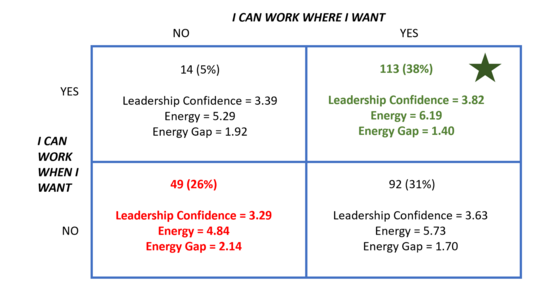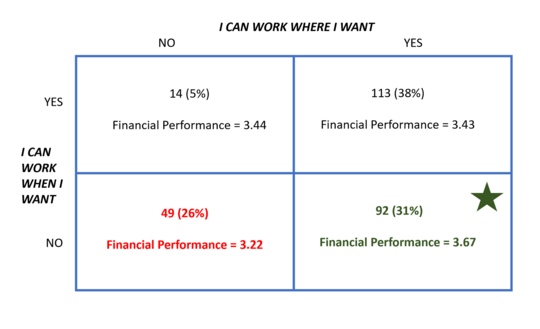
I am hearing a lot of “greats” in the news lately – the great resignation, the great reshuffle, and now it’s the great reflection. Why is everything so great? And what’s this all about?
A lot of this news seems to be focused on changes that took place during the pandemic and then after, with a lot of discussion about employees being sent home to work and the aftermath. Yes, that’s how employers talked about it initially; working at home was not a “great benefit,” but an effort to follow guidelines to keep employees and their families healthy. Initially, it was very hard for many employees to change where they work and affected when they could work. Childcare was a challenge; working at home while children were attending classes via video, creating office spaces for (in many cases) two working adults in addition to finding space for children to study and learn — all maddening for many people.
But today, after learning to live with the changes that happened, there appears to be a longing to continue working at home. This interest in employees working from home comes from many employees as well as employers. Employers cut costs dramatically by letting go of big leases and employees saved money from commuting and parking. At the same time, as technology allowed the workforce to learn how to work from home, having the freedom to choose where and sometimes when you work became a benefit.
A recent leadership study we ran explored the question of just how many leaders (certainly a subgroup of all employees) report they can work when and where they want and how that is related to some of the other measures we track, including leadership confidence, employee energy (a measure of productivity) and firm-level performance.
Does being able to work when and where you want matter to leaders?
About 300 leaders answered this survey. The respondents are leaders ranging from managers to C-level executives. In addition to asking a measure of leadership confidence (e.g., an overall scale assessing confidence in the leadership team, personal leadership skills, economy, firm’s strategy, staff, vision and ability to change), we also assess their overall energy at work. Leadership confidence is a metric we studied for many years, and while consumer confidence predicts buying, we find that leadership confidence predicts employee willingness to stay with their organizations during tough times and focus their energy on work. Energy is another construct I have measured for over 25 years, and I have over a million data points from companies around the world on employee energy.
Energy is defined as the internal force available for you to exert at work (ability to do work). Our ongoing research demonstrates that energy, assessed with two questions, is a valid measure of productivity at work (e.g., sales, customer satisfaction, safety, performance appraisal scores and more). For energy, we measure current working energy and optimal energy; we then subtract the two and the gap between them is predictive of various performance outcomes. So higher energy is often better, but low gap scores are the best.
Below is a table that combines the data showing how many people reported saying they could work when and where they want to work along with the scores for leadership confidence and energy in each quadrant

This two by two shows the highest number of leaders in the reporting sample (38%) say their confidence is highest compared to the others and their energy is higher and the energy gap lower (this is positive for energy data). Leaders are saying they are at their best when they can work where they want and when they want. The lowest scores are in the no/no quadrant, and if you have to choose between when and where, it appears the higher scores are associated with where they work.
We also collect data on firm performance. These scores are provided by the survey respondents, although we track their self-report data with publicly available financial data (for public firms). We have been using these one to five measures where one is very low performing and five is very high performing over the life of the project (20 years), and we find the measure is correlated with publicly available data.
Below is another table showing the average firm performance for each quadrant.

Maybe we are entering an era that can be labeled the “Great Reality Check.” Working when you want is really not an option for many employees, whether leaders or not. However, working where they want, in some form, is becoming a reasonable option and that may indeed be the biggest shift that is here to stay. The freedom, whether real or perceived, that comes with choosing where to work (even if the choice is only for limited days) has become an employee benefit.
The “Great Conversation”
These data can help leaders in small and large firms have a conversation — maybe a great conversation (though I am definitely not sure about that) focused on how work can be scheduled to optimize both individual and organizational level outcomes.
The last two months have been big travel months for me, attending multiple conferences on the West and East Coasts, and the topic of when and where employees work has come up everywhere. The consensus seems to be that the advantage of remote work is here to stay, but the need to connect with peers, your team and customers is an important social need that has to be built into the way companies emerge from the pandemic years.
The conclusion from these results is that helping employees have flexibility on where to work can enhance leadership confidence, energy and firm performance. However, control or management of when employees work appears to be important for higher overall organizational performance. These data are, of course, from a limited sample. However, the use of data to engage in dialogue is very powerful. My suggestion to all of you is to have the “Great Conversation” about when and where to work and keep engaging employees in this dialogue as the landscape of work changes.
To learn more about these data or to engage with fellow leaders in the group and Innovation Leaders Forum, contact Theresa M. Welbourne at twelbourne@culverhouse.ua.edu.
